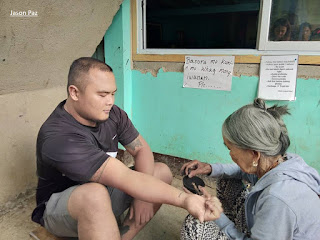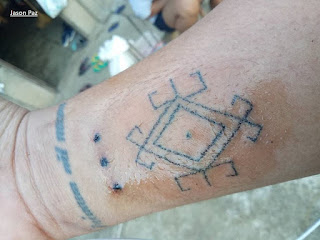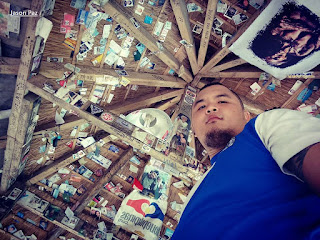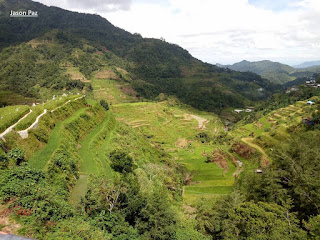Hiking has become one of the most popular activities among Filipinos in recent years, thanks to Facebook and other social media platforms that opened the doors to outdoor enthusiasts. Who would not love the beautiful scenery and jaw-dropping views that hiking a mountain could provide? But as they say, with great view comes great responsibility. Hiking is not just taking selfies or posting on Instagram to impress your friends and followers, more than that one has to be emotionally fit both in mind and body. It takes preparation and self-dedication to train and improve one's self in order to achieve the desired goal of reaching the summit and more importantly descend back safely without jeopardizing yourself and the whole team in the process.
Like any physical activities, preparation is essential to increase the potential for success of any hike. By doing so, you are ensuring that you are in good physical shape before you join an event. Don't rely everything on the organizer most especially if it is a DIY-KKB climb, yes the organizer is responsible for everyone's safety but you must always remember that you are embarking on a treacherous terrain which you yourself must be prepared at all times.
 |
| Taken at Mt Balingkilat descend (Alano Berina) |
Training is the Key
Back in the days, before you go on a major hike you must first do some minor climbs to help you acclimatize to the sudden change of terrain and elevation gain. This will help have a glance of what to expect during a hike. The weather varies differently in the mountain compared to that of the city.
But if you don't have time to do a minor climb you can replace it by Running, Stair climbing and leg exercises such as Lunges, Squats, Burpees, and even a fast pace Basketball game for a great cardio workout. This will ensure that your lungs, heart and leg muscles will be in the right condition. I don't hike regularly with almost every 3 months of interval but I see to it that I regularly run, play basketball and do some leg workouts.
Be Self Contained
Part of hiking is preparing for the things that you will be needing for the hike. The most important of course is your food, trail food and hydration. Yes, there maybe mountains with ample water source but don't rely too much on that. There are times when the watersource might dried up or due to torrential rains water might get too murky making it not potable to drink. During dayhike, I bring at least 2 liters of water and 1 liter of Gatorade plus I always bring Aquatabs (a water treatment tablet) just in case I need to refill on watersource. But on multi-day hiking trip I usually bring a total of 6 liters of hydration plus Aquatabs to ensure that I will stay hydrated throughout the trail. Other items that one must always include in their lists are poncho or any raincoat (this can protect you from rain and even hypothermia), umbrella if the trail is an open grassland, headlamp and of course first aid essentials like medicines, alcohol and bandages. It's just so funny that some hikers have prioritized their camera over the items mentioned earlier, again it's not bad to bring camera phone but you have to know what's more important than the other, btw if you don't have a camera you can always ask your teammates to tag you in their pictures.
Check your Pace
Are you a fast pacer or slow hiker? You must know your pace. If you are a slow hiker don't hike with the fast pacer, otherwise, you might exhaust yourself in the process and might end up having cramps and all sorts of muscle pain. That is why during hiking events a team is usually categorized into Lead group, Mid group, and Sweep Group to enable the hikers to hike at their pace which they are comfortable with. Personally, I believe that regrouping during a hike is for the designated grouping itself and not for the whole team as a whole. Just imagine if you are in the blazing inferno of Cawag mountains, do you think it is fair with the lead group to wait for the sweep group who are 3 hours away or more, I don't think so. They'll just end up toasted and dehydrated while not having any progress. That's why knowing your pace is very important.
Be a Team Player
Team player simply means in unison with the group. If you are the pacer, please be considerate enough to give the last man to arrive at least 2 minutes to rest, rehydrate and catch their breathing. Since you are hiking as a group, be sensible enough to consider that you did not pay solo for the guide. There are other people who also paid for the guide's fee thus, everyone in the group needs to see the presence of the guide. If you want to go ahead alone, then hire your own guide.
It also involves being considerate to others, if your group has covered almost 3/4 of the trail and your injury is not between life and death, please don't abort the hike just because you are discouraged or you've just lost your motivation. Remember that finishing the hike is also part of the commitment when you join a hike. Your groupmates will surely understand that your group's pacing will be slower and it's way much better than quitting and jeopardizing the hopes of others in reaching the summit. As they say in Tagalog "susuka pero di susuko", Willing nman kami mag adjust ng pace khit mabagal basta matapos un hike kysa basta nlang magquit for no valid reason. Prepare for the worst but expect for the best.
Do Some Research
Just because Halcon and G2 are picture perfect would you just join such event without even reading some articles about the trail classification and difficulty level of such mountains. You have to read blogs to know the reviews of others who have personally experienced climbing the desired mountains. By doing so, you can have the right preparations needed before going on such hikes like technicalities, steepness, water source, wildlife, open trail or not, mossy forest. This will help you bring the right equipment, do the right training and bring the appropriate clothing for such mountains.
Be Mindful of the Time
Always be on time during meet up, following the time allotted for the event is one of the best contributions that each joiner can contribute. Being on time means you can start the hike early and finish early. This also applies during "water break" and "meal break", during dayhike especially if the trail is too long, don't waste too much time cooking your food, go for ready to eat food that gives you instant energy which can save you a lot of time and still give you ample time to rest and take CR breaks. For long trails that exceeds 30km, I prefer 30mins as the longest meal break, taking meals that exceed an hour will actually drain your momentum and makes you feel weaker going back on the trail.
Taking pictures is another thing that slows down the pace of the group, I just take 1-2-3 shots that I can choose for my blog. I just noticed that there are others who would take a thousand pictures of themselves with the same pose and same background thinking that they'd be more beautiful, what the heck? "Ganun na tlaga itsura mo, wla na magbabago" If you want to take pictures, you can do that while walking and not disturbing the group as a whole.
Honesty and Humility
Tell your weaknesses, the things you are afraid of like acrophobia and anything that scares the hell out of you, by doing so your teammate can support you in those areas you are not comfortable with. And do not be overly confident that you have hiked several major mountains in the past, always remember that each one has unique characteristics. Don't underestimate a mountain just because it has a lower rating, be mindful that you are not in your comfort zone and you are still stranger in far away land.
Respect for the Local Guides
Just because you hired the services of a local guide it does not mean you can do anything that you want. Big No! You have no right to yell at them, you only paid them for their guiding skills and you have definitely not bought them as a person. Guides, as the term implies, is a guide and not a personal porter, if you want someone to carry your stuff better hire one.
No to "Buwis Buhay Pose"
Does doing a dangerous pose or stunt makes you stronger and a better hiker? Yes, you might become famous when something bad happens to you but other than that I call it attention seeker's syndrome. Be responsible enough not to do some crazy stunts that might endanger your life and jeopardize your group's trip just because something unfortunate happened to you. If you have love ones then you'll be more careful not to do that crazy stuff.
Inform Your Family About Your Planned Trips
This is one of the most important things to do before traveling yet it is usually neglected. Just ask this simple question, what if something bad happens to you? And your family are all unaware where to find you? For Security purposes please give the important details like contact information, whom and where you will be traveling with, so in case of emergency they will have an idea where to find you.
Leave No Trace Principle
“Take nothing but pictures, leave nothing but footprints, kill nothing but time.” As a responsible mountaineer you need to respect nature and minimize the adverse impact on nature caused by tourists, hunters, hikers, and others which includes noise and trash. “Leave nothing but footprints” be responsible enough to clean your waste like plastics, lunch droppings or anything that you brought along on your hike. “Kill nothing but time” means refrain from killing wild animals and plants whose natural habitat that are currently invading, it's their home, not yours. You are just a visitor, "nanahimik sila pupunta punta ka".
And for Organizers be transparent and clear of what to expect in the hiking event that the participants are going to embark. I suggest that you screen your guests if they are capable of such endeavor, don't invite them if you don't know them personally just to complete the required joiners otherwise you might imperil the safety of the whole group.































